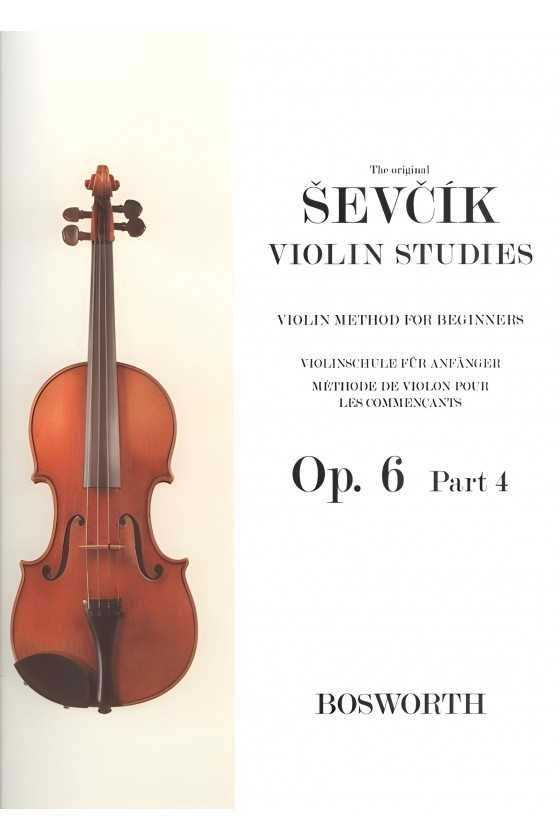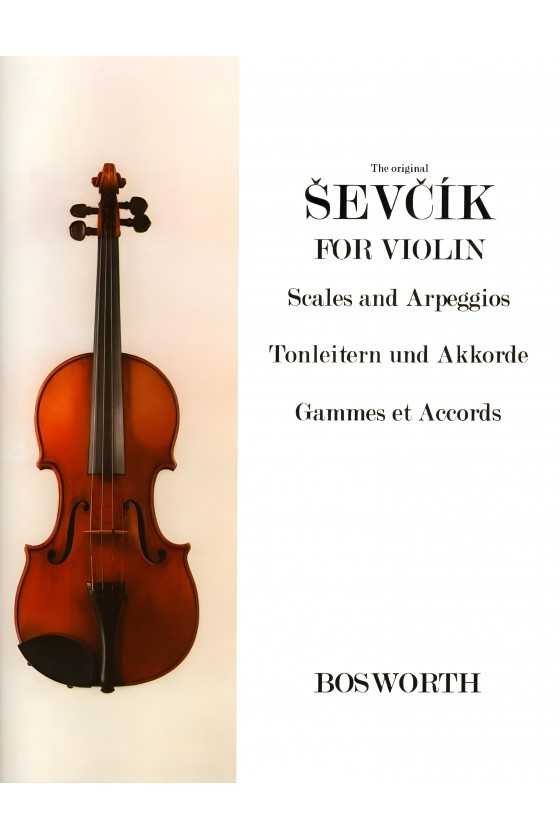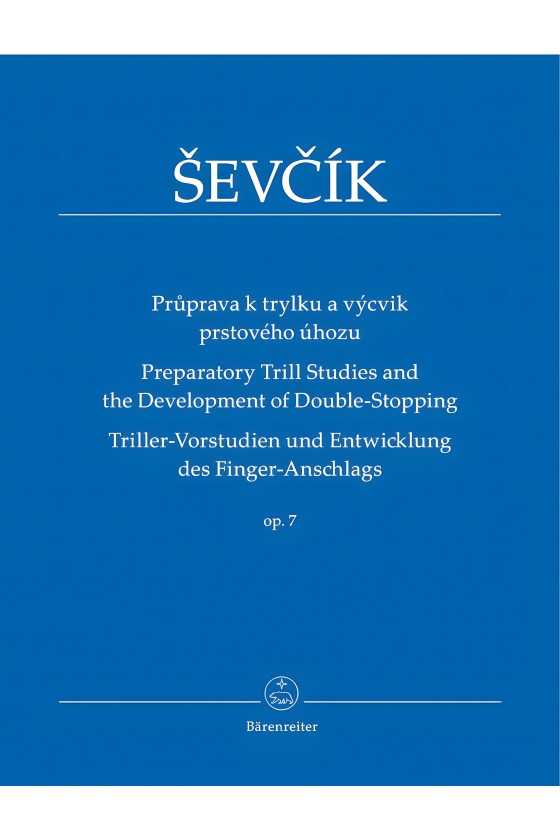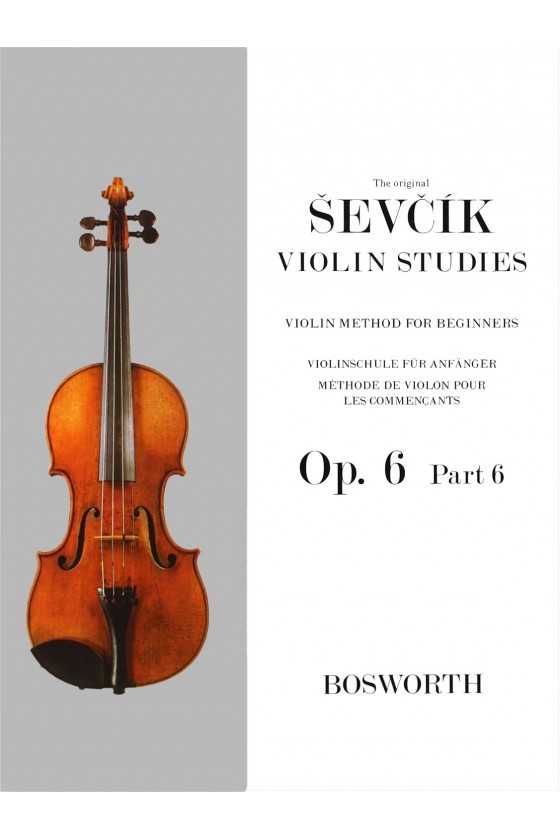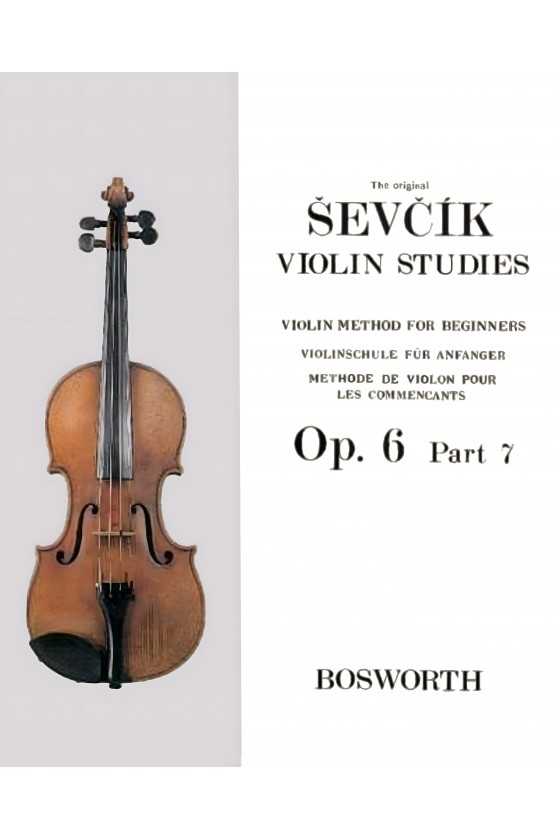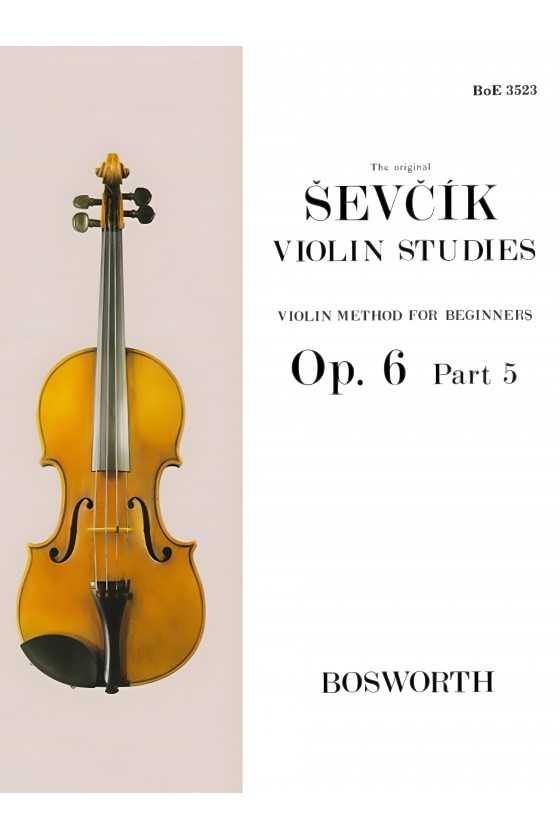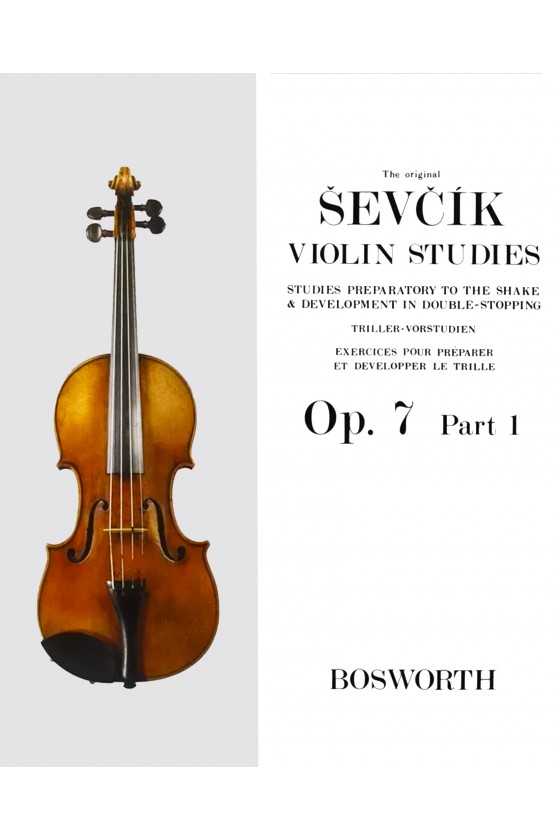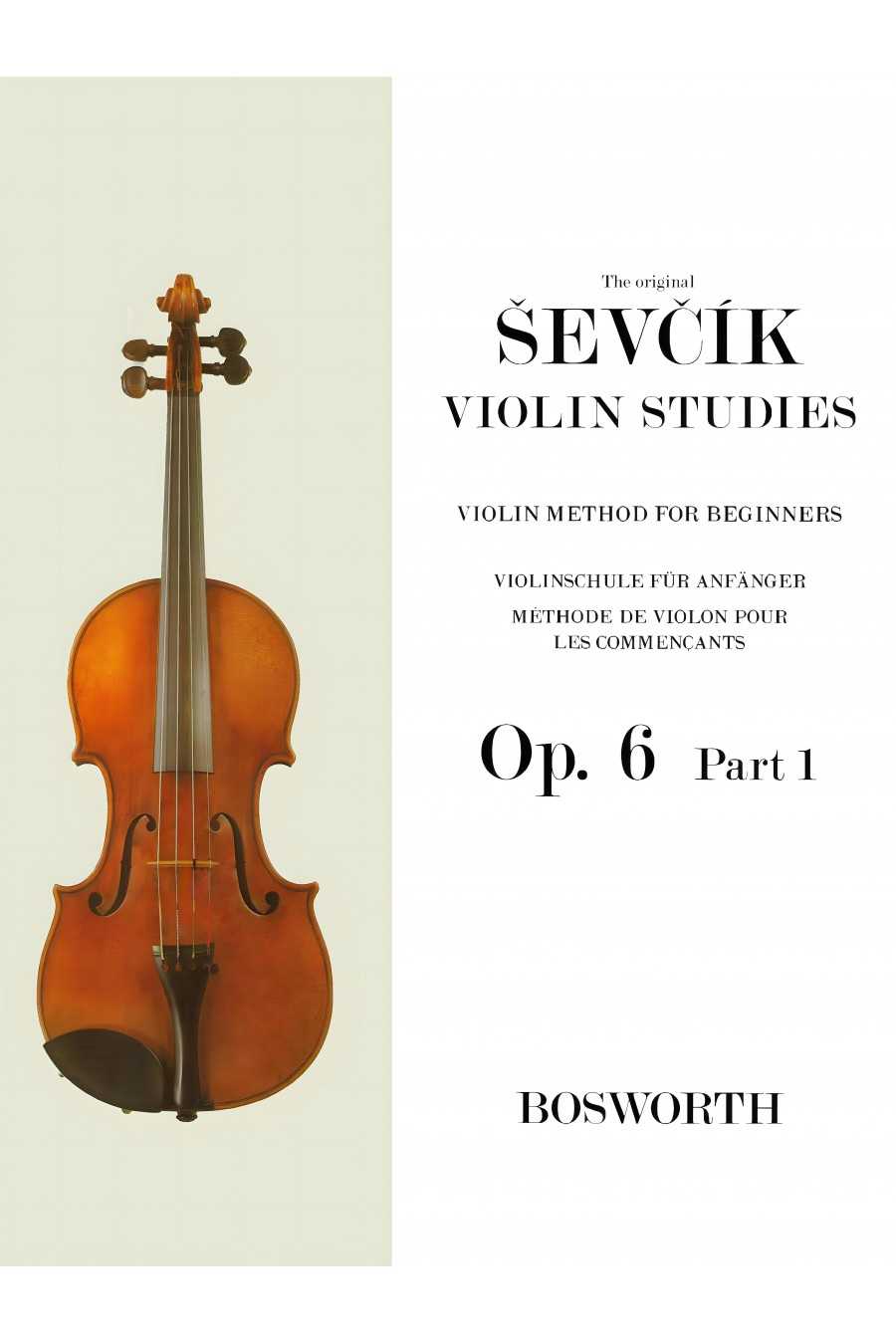
Sevcik, Op.6 Bk.4 for Violin
This book series is perfect for beginner violin students. It improves left and right-hand techniques with exercises and melodies. Part 4 focuses on B-Flat, E-Flat and A-Flat major scales, chromatic scale, G and C minor scales and changing keys.



